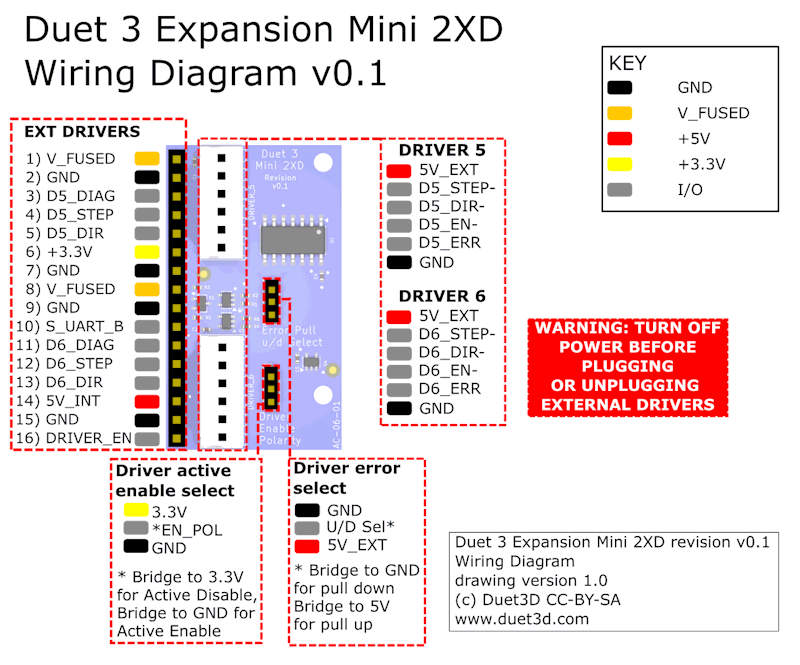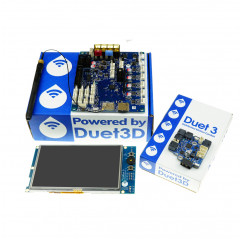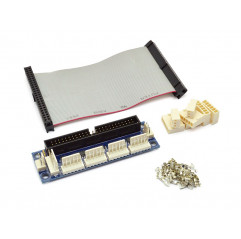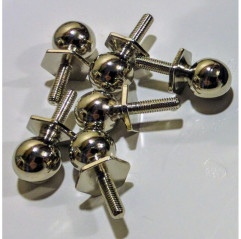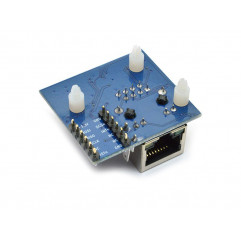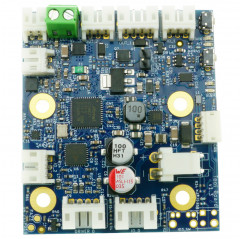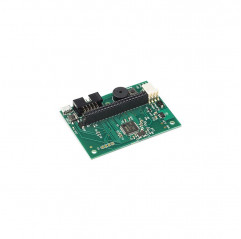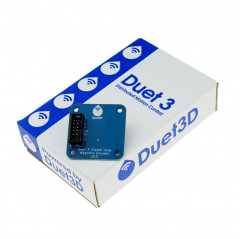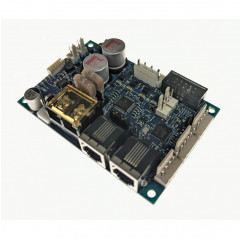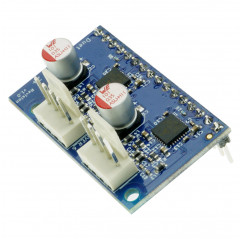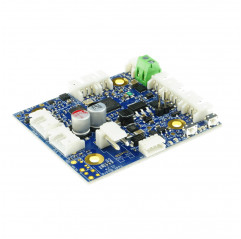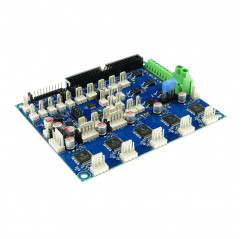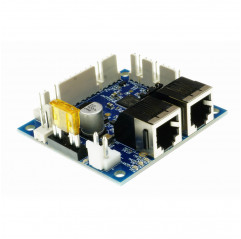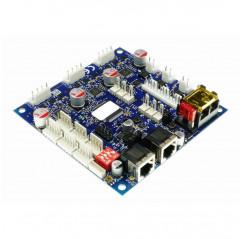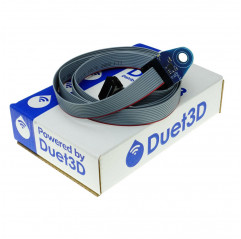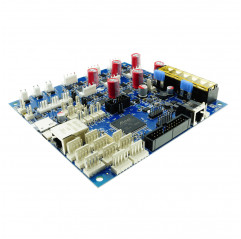Duet 3 Expansion Mini 2XD is designed specifically for the Duet 3 Mini 5+ expansion connector. It can also be used with other boards, but such use is not officially supported. The board offers 2 channels driver for external motors, with specifications equivalent to those found on the Duet 3 6XD.
Hardware specifications
- Support driver external: 2 ports with step/direction/enable signals and 5V single-ended fault and signaling inputs (active low).
- Other I/O: none (NIL).
- Connection: direct mounting on Duet 3 Mini 5+ main board.
Operating limits.
- Input supply voltage: 5V, supplied by the Duet 3 Mini 5+ via the expansion connector.
- Fuses: no fuses on board; uses V_FUSED protection shared by the Duet 3 Mini 5+.
- Maximum ambient temperature: 70°C.
Firmware Notes.
Compatible versions of RepRapFirmware: RRF 3.6.1 and later, when used on the Duet 3 Mini 5+ main board.
Earlier firmware versions can provide proper motion, but do not support DRIVER_ERROR inputs.
There is no firmware loaded directly on the Duet 3 Expansion Mini 2XD.
The driver are numbered as "5" and "6" to allow them to be referenced, for example, to assign them to the X and Y axes:
M584 X5 Y6
Use the M569 command to set the appropriate timing parameters for the external driver, for example:
M569 P5 T2:2:2
M569 P6 T2:2:2:2
Dimensions
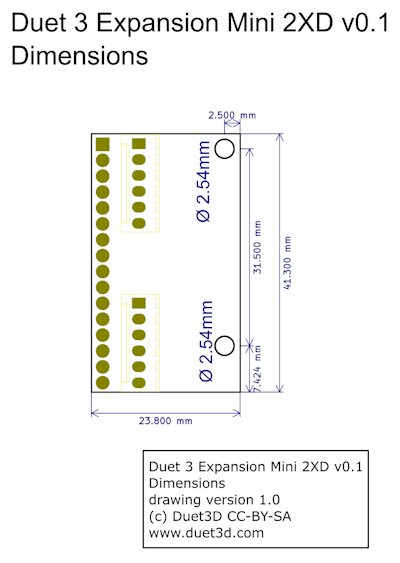
Mounting
Duet 3 Expansion Mini 2XD has mounting holes with standoffs (standoff holes) that align with the corresponding holes on the Duet 3 Mini 5+. The pictures show the Mini 2+ board mounted, but the procedure is identical for the Mini 2XD. The Duet 3 Expansion Mini 2XD comes with nylon spacers, which are needed to securely fasten it. Spacer height: 11 mm Compatible with 1.6 mm PCB and 2.5 mm holes Examples of compatible spacers: FIX-MADA-11 or TRDLCBST-7-01

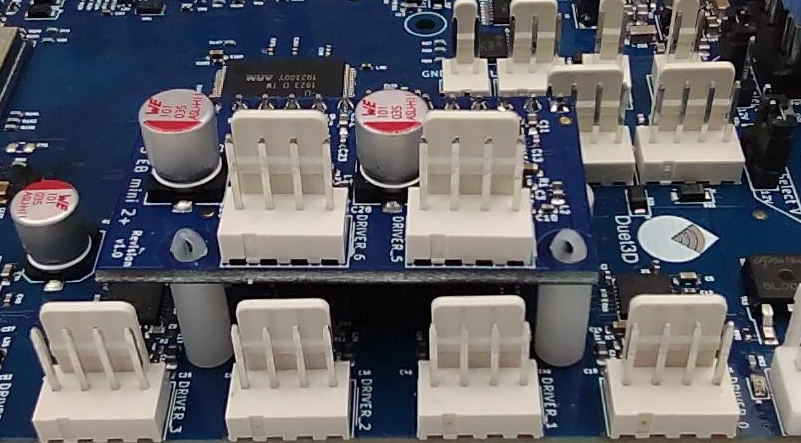
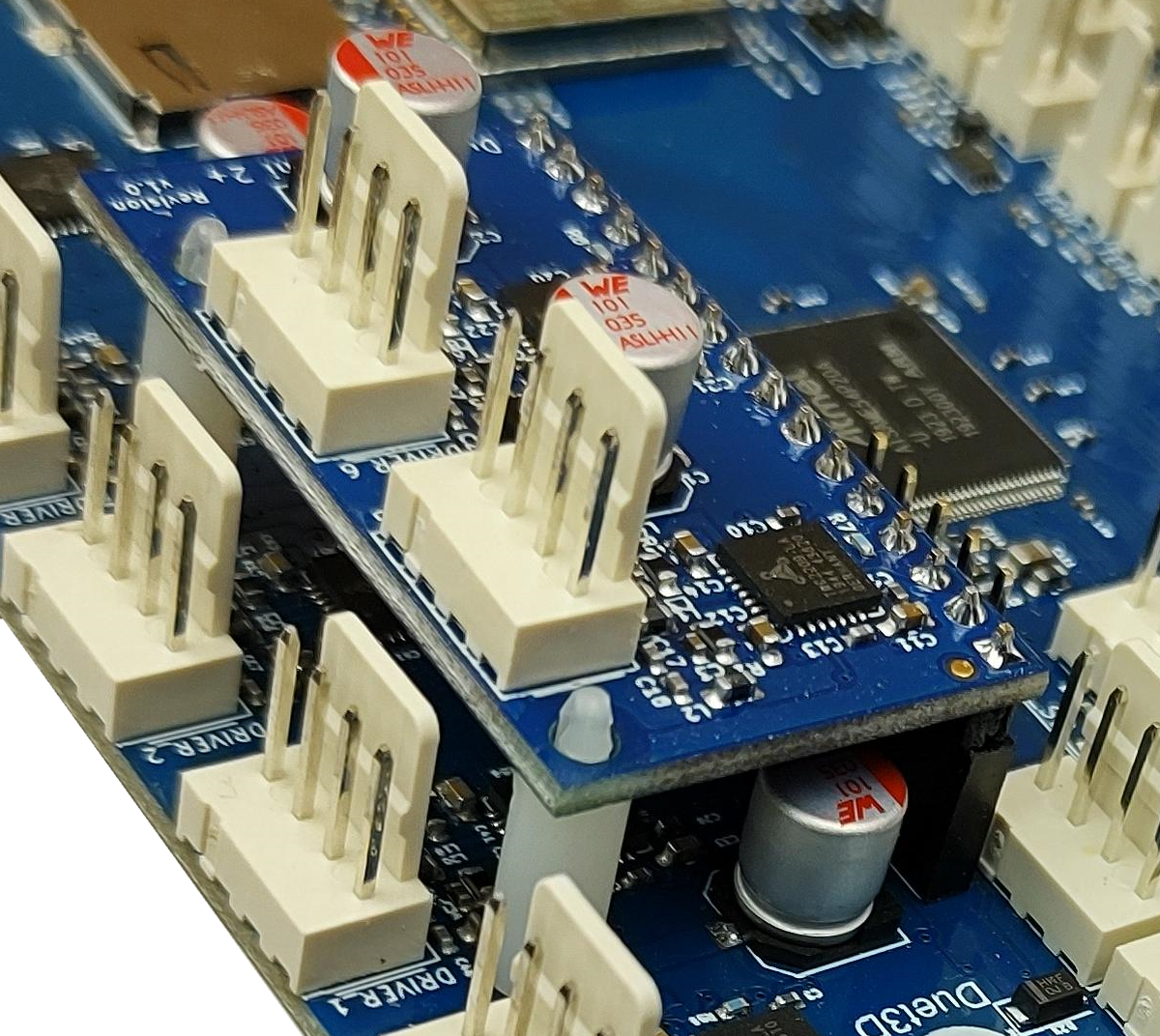
Wiring Diagram
Connection of External Driver for Motors
Duet 3 Expansion Mini 2XD supports the direct connection of driver external stepper motor drives equipped with opto-isolated inputs or equivalent.
Note that:
- The Step and Dir outputs of the 2XD are close to 0V when active ("on") and about 5V when inactive ("off").
- The 2XD generates step pulses with a negative transition, so proper operation is only guaranteed if the driver samples the step on the rising edge of the pulse. For driver like stepstick or similar, this behavior depends on the driver chip. Otherwise, an invertor must be inserted between the output Step and the input of driver.
- The direction can be reversed using the S parameter of the M569 command.
- The Enable output is close to 0V when active ("on") and about 5V when inactive ("off"), or vice versa, depending on the position of the jumper "Driver Enable Polarity" (En_Pol). Note: On the Mini 5+ board, all seven driver share a common Enable signal.
- The jumper sets the default value in case there is no M569 command with R parameter. The main objective is for the driver s to be off when the power is turned on.
- The R# parameter of the M569 command has priority over the jumper:
R0 = signal is not active (pulled to +5V) to enable driver.
R1 = signal is active (pulled to 0V) to enable driver.
The following diagram shows the connection to a driver for typical opto-isolated stepper motor; the connection is identical to that of Duet 3 6XD.


Package contains: 1 x Duet 3 Mini 2XD Expansion Board

















